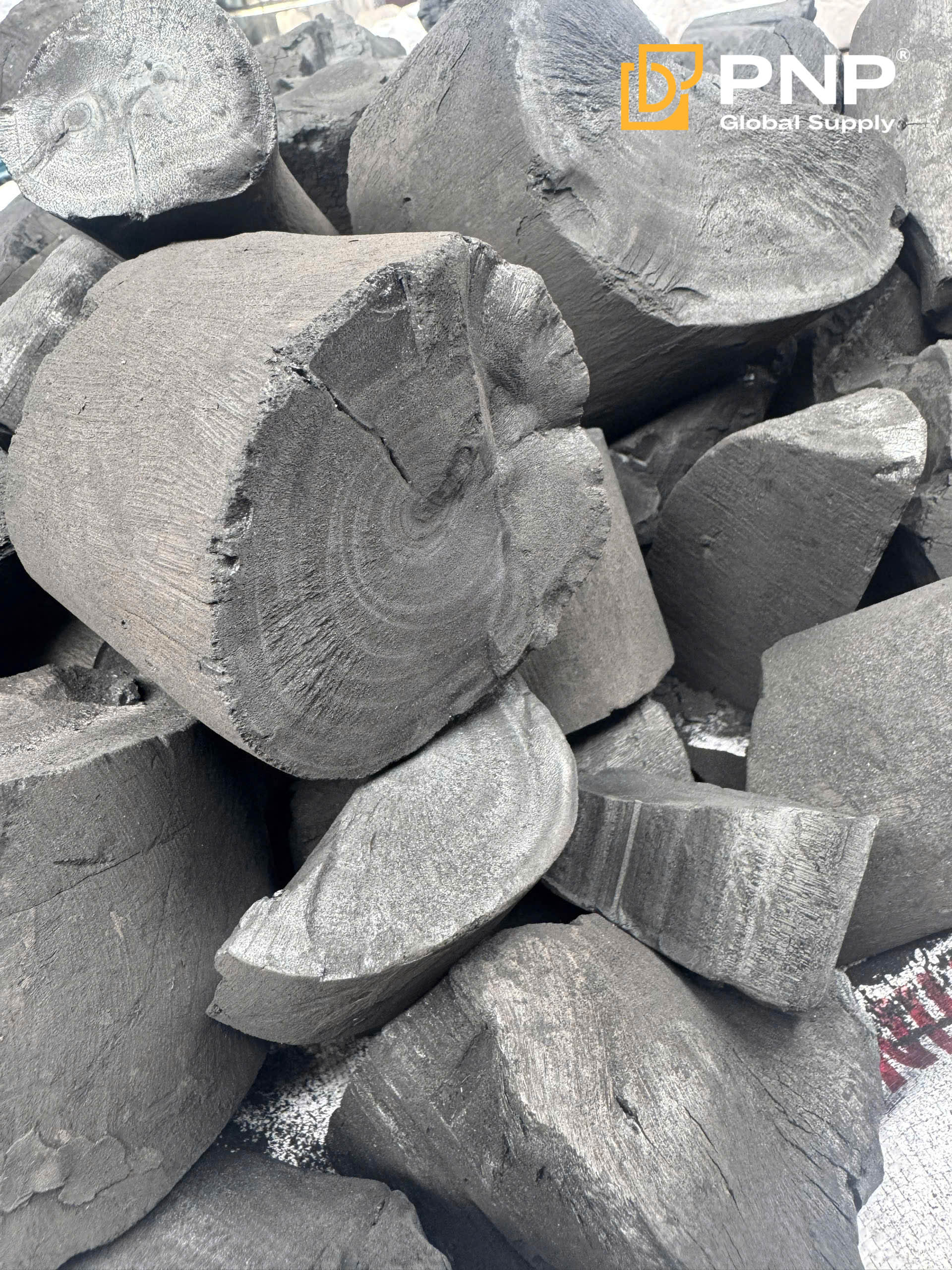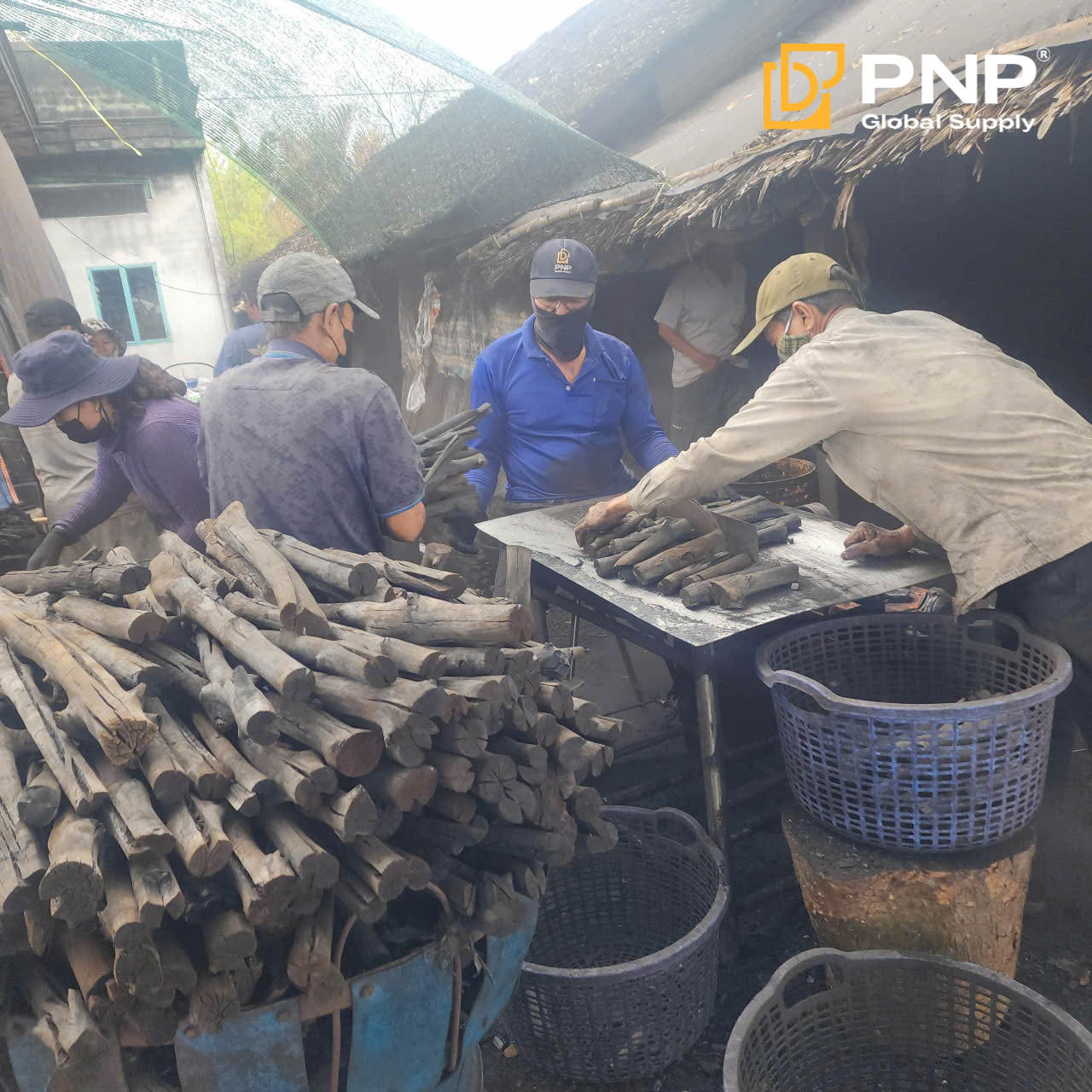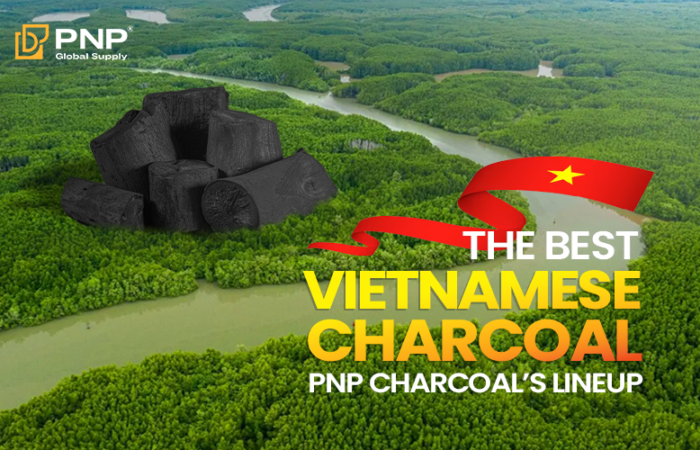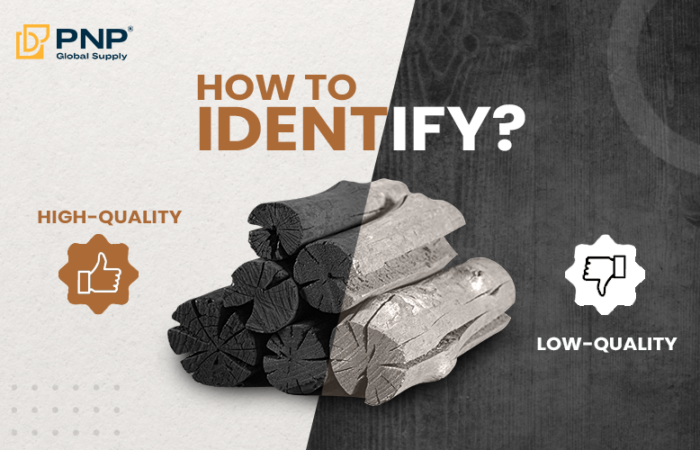The global demand for high-quality BBQ charcoal continues to grow rapidly, especially in regions like the Middle East, Australia, Japan, and Europe. Vietnamese charcoal, known for its long burn time and natural origin, is gaining popularity thanks to its competitive quality and price. However, to successfully reach international buyers, charcoal exporters must follow a clear and detailed export process.
In this article, we’ll walk you through the procedures for exporting charcoal—covering everything from initial customer inquiry to final vessel departure. Whether you’re a buyer looking to buy charcoal, or a supplier planning your first container, this guide gives you a full view of real-world export procedures.

Buyer Inquiry and Initial Quotation: The First Step to Export Charcoal
The export process begins when a customer from abroad sends an inquiry to a supplier in Vietnam. This message typically includes the type of charcoal they want to purchase—such as mangrove charcoal, white charcoal, coffee charcoal—or a specific grade of BBQ charcoal. Other key details might include:
- Quantity (in tons or container loads)
- Preferred charcoal packages (bulk, 3kg paper bags, PP bags, cartons)
- Destination country and port
- Estimated delivery date
- Special quality requirements
Once the supplier receives this inquiry, they will send back a formal quotation. This document includes:
- Product specification
- Charcoal price per ton or per package (FOB or CIF basis)
- Shipping terms (Incoterms)
- Lead time and estimated time of arrival (ETA)
- Payment terms (T/T, L/C, or deposit)
A clear and professional quotation helps the buyer compare offers and builds trust for further cooperation.
Confirming the Order: Contract and Advance Payment
When the buyer agrees with the price and terms, both parties move forward by signing a commercial contract. This contract includes:
- Product name and description
- Quantity and total value
- Packaging format and label design
- Delivery timeline and shipping method
- Payment conditions
- Legal clauses for dispute resolution
At this stage, the buyer usually makes an advance payment (commonly 30%–50% of total value) to initiate the production process. This payment confirms the order and helps the supplier purchase raw materials and plan production.
Production, Packing, and Quality Control
After receiving the deposit, the supplier begins producing the goods. For charcoal exporters, this phase is not only about making charcoal but also about ensuring consistency and export-grade quality.
Key steps include:
- Selecting high-density raw wood (longan, eucalyptus, mango, coffee, etc.)
- Carbonizing under controlled temperature
- Cooling and removing ash or debris
- Sorting by size, shape, and burn quality
- Packing into selected charcoal packages, such as 5kg paper bags, 10kg cartons, or jumbo bags
Once the goods are packed, quality inspection is carried out. Buyers from strict markets often request third-party inspection (by SGS, Intertek, or local agencies) to confirm:
- Moisture content (under 8%)
- Ash content (under 7–10%)
- Fixed carbon (above 60%)
- Burning time (over 2.5–4 hours depending on charcoal type)
A quality certificate is issued and attached to the shipment if required.
If you’re interested in learning more about proper charcoal packaging for export, check out our in-depth article on this topic: What is the suitable kg charcoal BBQ packaging weight for export?

Preparing Export Documents: A Crucial Step in Export Procedures
One of the most important parts of the procedures for exporting is the preparation of accurate shipping documents. These documents ensure smooth customs clearance and payment release from the buyer’s bank. The key documents include:
- Commercial Invoice: Listing the product, unit price, and total amount.
- Packing List: Detailing number of bags, weight per bag, and packaging type.
- Certificate of Origin (C/O): Proving that the goods are made in Vietnam, often required for tax reduction in importing countries.
- Phytosanitary or Fumigation Certificate: Required for wood-based products in certain countries.
- Bill of Lading (B/L): Issued by the shipping line after the container is loaded onto the vessel.
- Export declaration form: Submitted to the Vietnamese customs system.
Any mistake or missing detail in these documents can lead to port delays, penalties, or even shipment rejection. That’s why experienced charcoal exporters work closely with freight forwarders and customs agents to ensure accuracy.
Booking the Vessel and Arranging Ocean Freight
While the goods are being packed and the documents prepared, the supplier works with a freight forwarder to book space on a vessel. This step involves:
- Choosing a suitable vessel route and schedule
- Getting a quote for ocean freight charges
- Reserving container space (usually 20ft or 40ft containers)
- Arranging trucking to deliver the container from the factory to the port
At this point, the estimated time of arrival (ETA) is confirmed and shared with the buyer. Depending on the destination, sea transit time ranges from:
- 5–7 days to Singapore and Malaysia
- 15–20 days to the Middle East
- 20–30 days to Australia
- 25–35 days to Europe
Ocean freight costs fluctuate depending on the season, fuel prices, and demand. For new exporters, working with a trusted forwarder ensures better rates and on-time space booking.
6. Customs Clearance and Port Handling
Once the container arrives at the port (e.g., Cat Lai, Hai Phong, or Cai Mep), it must go through customs clearance. This step involves:
- Submitting the export declaration and invoice via the national customs portal
- Paying any applicable fees or environmental taxes
- Presenting the container for inspection (if randomly selected)
- Getting port gate-in approval and container seal
After these formalities, the container is loaded onto the vessel according to the shipping schedule. A clean Bill of Lading is issued, marking the completion of physical export.
7. Post-Shipment Process and Buyer Support
Once the vessel departs, the exporter sends scanned documents to the buyer by email and dispatches the original documents (if needed) via courier services like DHL or FedEx. These documents allow the buyer to:
- Clear the goods at their destination port
- Process payments through their bank (if using L/C)
- Track the container during its voyage
The charcoal exporter continues to follow up with the buyer to confirm ETA, arrival condition, and any issues during unloading.
This after-sales step is crucial in building long-term partnerships and customer satisfaction.
Realistic Timeline for Exporting Charcoal
The overall process from inquiry to final delivery typically takes:
- 1–3 days: Quotation and contract finalization
- 7–14 days: Production and packing
- 2–4 days: Inspection and documentation
- 3–7 days: Booking vessel and customs clearance
- 10–35 days: Sea shipping time
On average, it takes 25–50 days for goods to reach the buyer after the first contact, depending on order size and destination country.
Tips for New Charcoal Exporters
If you’re new to the industry, here are some best practices:
- Understand your target market’s preference in BBQ charcoal type and size.
- Offer flexible charcoal packages (paper bag, carton, bulk) to meet retailer or wholesale needs.
- Keep your production lead time and estimated time of arrival accurate—buyers rely on timely delivery.
- Avoid underestimating ocean freight costs; always update quotes based on current rates.
- Build relationships with reliable inspectors and forwarders—they can save you from costly mistakes.
Why Work with a Trusted Charcoal Exporter?
The global charcoal trade is competitive, and quality alone is not enough. Working with an experienced and professional charcoal exporter ensures:
- Clear communication and transparency
- On-time production and vessel booking
- Accurate documentation and customs support
- Competitive charcoal price and cost-effective packaging options
In Vietnam, companies like PNP Charcoal are known for their real-time updates, strict QC process, and successful shipments to UAE, Japan, Australia, Korea, and more. Their in-depth understanding of procedures for exporting helps buyers save time and reduce risks.

Conclusion
The procedures for exporting charcoal are a blend of logistics, paperwork, quality control, and customer care. Each step—from quotation to vessel departure—demands precision and professionalism.
Whether you’re a business looking to buy charcoal or a supplier preparing for your first international shipment, mastering the full export procedures ensures not only a successful delivery but also long-term business growth.
________________________________
Contact us for more information
Facebook: PNP Charcoal
Instagram: PNP Charcoal
Email: info@pnpglobalsupply.com




